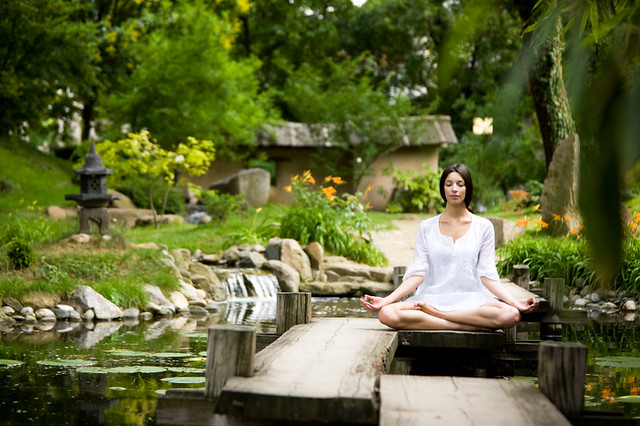Breathing. It's a simple, yet imperative process we perform every moment, of everyday. We inhale and exhale automatically to keep oxygen flowing to our brain and air permeating our lungs. In yoga, the breath is known as prana or a universal energy that can be used to find a balance between the body-mind, the conscious-unconscious, and the sympathetic-parasympathetic nervous system. Breathing is not just a necessary tool for physical survival; it is an untapped resource with the ability to slow the mind in a hectic world.
It's easy to see why, for some of us, "turning off" our brains can be challenging. Even while driving, shooting off emails, checking our Facebook page, eating dinner, or watching our kid's baseball game we are often preoccupied; thinking of the things we need to get done, or places we need to be. Being able to just stop...breathe, and return to the present moment, would promote a myriad of physical and spiritual benefits.
Meditation along with deep breathing, has been used for thousands of years; most commonly to get a deeper understanding into the sacred and mystical forces of life. But today, it is an inexpensive and simple way to release stress and find a moment of peace.
Best selling author and integrative physician, Dr. Weil, states:
"Practicing regular, mindful breathing can be calming and energizing and can even help with stress-related health problems ranging from panic attacks to digestive disorders."By controlling the rate and speed of your breath you can clear your thoughts of distractions and find tranquility where ever you may be.
Andrew Weil, M.D
For a simple guide to relaxing your breath try mantra mediation, taught by Dr. Deepak Chopra in his book "The Spontaneous Fulfillment of Desire":
A common way to begin meditation is to gently focus on one thing so that it becomes more difficult for stray thoughts to enter your mind. I like to start with a breathing meditation.
To begin meditation, find a comfortable position. Sit in a comfortable chair, with your feet flat on the ground. Place your hands in your lap with the palms facing upward. Close your eyes and begin witnessing your breath.
Once a person becomes comfortable with simply sitting quietly and focusing on breathing, I recommend adding a mantra, which creates a mental environment that will allow you to expand your consciousness.
The mantra I use, and that I recommend for achieving synchrodestiny, is the simple mantra "so-hum." This is the mantra of the breath; if you observe your breathing you'll hear "so-hum" as air moves in and out of your lungs. As you inhale, the sound of that vibration is "so." And as you exhale, the sound becomes "hum." If you want, you can experiment with this. Inhale deeply, close your eyes and your mouth, and exhale forcefully through your nose. If you concentrate, you'll hear the "hum" sound quite clearly.
One of the techniques of meditation is, in fact, simply focusing on where your breath comes from. With your eyes closed, inhale and think the word "so"; on the exhale, think the word "hum." Gradually both the breath and the sound will become quieter and quieter and quieter, and the breath becomes so quiet that it almost seems to stop. By quieting your breath, you quiet your mind.
Read more: http://www.beliefnet.com/Wellness/2003/10/MantraMeditation.aspx#ixzz1dejvBIhjIf you find yourself in a place, like your car, that won't permit you to close you eyes, try deep belly breathing. When we get agitated or stressed our breathing tends to get short and shallow. The goal is to lengthen each inhale and exhale by focusing on your breath--letting go of all thoughts and worries.
Sit in a comfortable position and inhale slowly for about 5 seconds through your nose, allowing your belly to fill with air. Then exhale through your mouth for 3 seconds, pushing out all the air from your lungs until your belly is flat again. Repeat this until you feel a sense of calm wash over your body, and the only thing you are paying attention to is your breath. This can be done quietly at you desk, or while sitting in traffic.
Whatever technique you use, remember that focusing on your breath and the present moment can be a useful tool when the world around you becomes too chaotic.
What do you do calm yourself when things get crazy? Let me know in the comments section below.
Deeply Breathing in Granolaville,














1 comments:
When I get stressed I start thinking about all I have to be thankful for and of all the situations God has seen me through. Ive been considering meditation because I have found my attention span for things has really changed. I figured mediation could help...if I can choose to concentrate longer . Your blog here has good timing.
Post a Comment
Leave us some crunchy goodness...